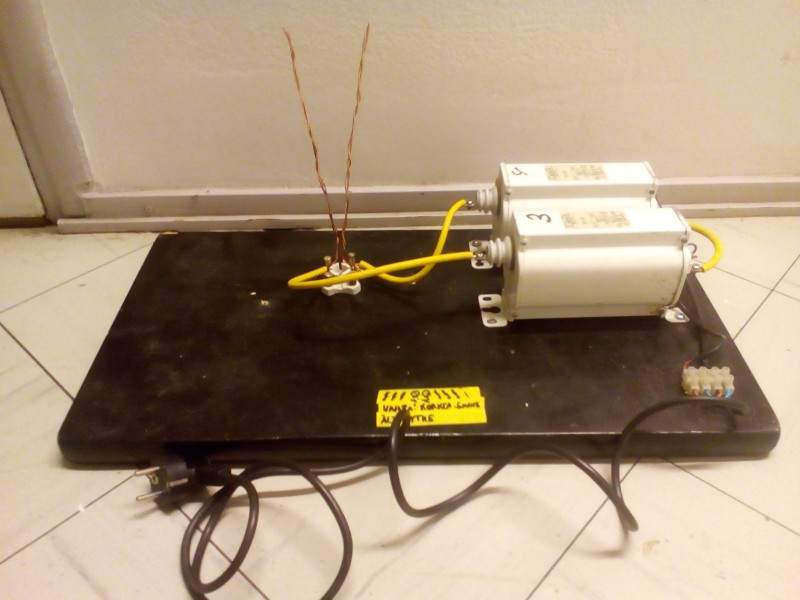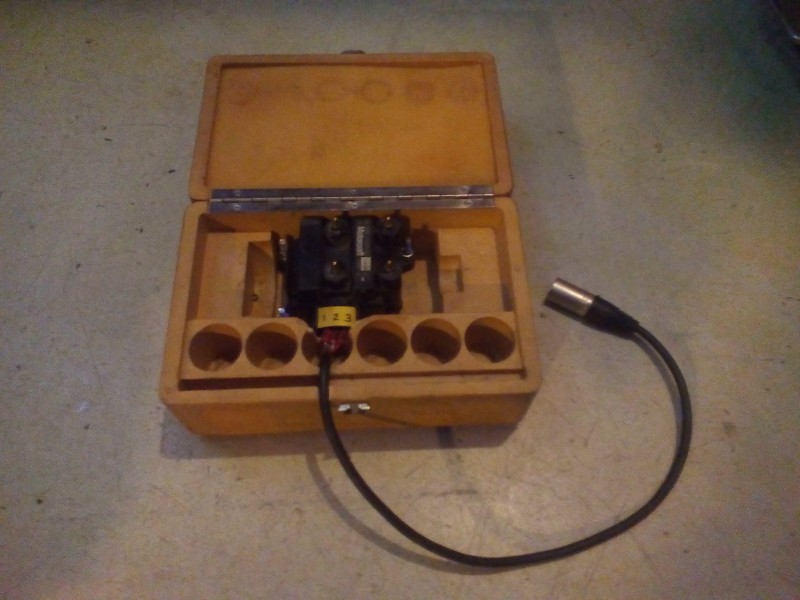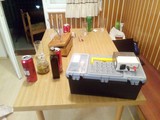Spark generators
Category: Inventions
Collaborators: Koelse

The spark generators are three electric sculptures that arc high voltage through the air. They create the Jacob’s ladder effect and generate sound in different ways.
The spark generators were a Koelse project. They were built specifically for a performance on Avantgarde Obscura event on 2017-05-12. The arcing was used as a stage prop and the sound was picked up with a coil and mixed in with other musical equipment.
First generator is a simple Jacob’s ladder constructed from two 3 kV neon sign transformers. These were connected in parallel with inverted phases, effectively producing 6 kV. The voltage was produced between two metal electrodes put together from old radio receiver antennas. This simple item took quite long to build due to extreme care taken — as soon as the fear of high voltage had dissipated, subsequent work proceeded much quicker.
It turned out that arc production is mechanically quite delicate. The initial arc only jumped a very short distance, and afterwards producing the Jacob’s ladder required quite carefully adjusted angle between the electrodes. However, fixing all parts properly and adjusting with a wrench finally made for reliable operation.
The only sound produced by the first ladder is the 50 Hz brum, modified into crackle and hiss by the vibration of various mechanical parts and the glowing air. During the Avantgarde Obscura performance, the frequency was picked up by a coil and fed into other sound devices.
The second spark generator used a different source of high voltage: a car ignition coil. Feeding the coil with a brief 12 volt pulse creates a brief high voltage spike on the output end. For continuous operation, I built a simple microcontroller-and-transistor board that continuously creates the pulses. It turned out that this way created much weaker arcs that the neon transformers did. However, the good side of this approach is that frequency is controllable by the microcontroller.
Since the machine was to be first used in a musical performance, I tried to create some musical sounds. This was a very interesting challenge for me, as Koelse is, among other things, also a band, but I am not much of a musician. Somehow, theoretical approach to music is more natural for me. Thus I programmed the simplest kind of tone generator I could think: A producer of random notes from equally tempered, chromatic scale. Each note was of equal length and chosen randomly over range of five octaves. The resulting sound was once again picked up with a coil and fed to the rest of equipment. The end result was referred by somebody from the audience as “the Super Mario Song”.
Later on, the first spark generator had also been displayed in other occassions, including 50 Hz, Koelse’s 15 years anniversary exhibition. For display in unguarded space, it received some safety features making is more difficult for a curious exhibition visitor to touch the parts with high potential. The construction of the second one unfortunately proved to be quite fragile and stopped working very soon after its debut. As far as I can tell, the electronics design was not sound and some component fried due to normal usage.
Perceiving this as a series of works, I also created a third one. It was a further development of the second one, also utilizing car spark plugs. This time I used a pair of plugs, which I searched for and found from a car dismantler’s. This allowed for having two independent sparks. I built separate control and driver for these two, producing a two-voiced instrument.
I carried the random generated tune idea over from generator #2 to the third generator. Continuing my investigation into the theory of music, I found out about the Bohlen-Pierce scale. Its first advantage, from my point of view, was simply that it was unusual. Secondly, as far I understood from what I read, it was particularly suited for intervals of ratios of odd numbers: 3:5, 5:7, and so on. At least in my imagination, the odd intervals played well together with the square wave drive I used, as square waves have the property that they contain only odd harmonics of the base frequency. Additionally, the rhythmic pattern is a bit more complex than the second generator had. All together, musically the third generator was a two-voiced random tune generator using the Bohlen-Pierce scale.
The third generator was presented in 2RICE, an one night art event in an abandoned factory in Ljubljana. It is also briefly featured in documentary that KulttuuriCocktail made about Koelse.






